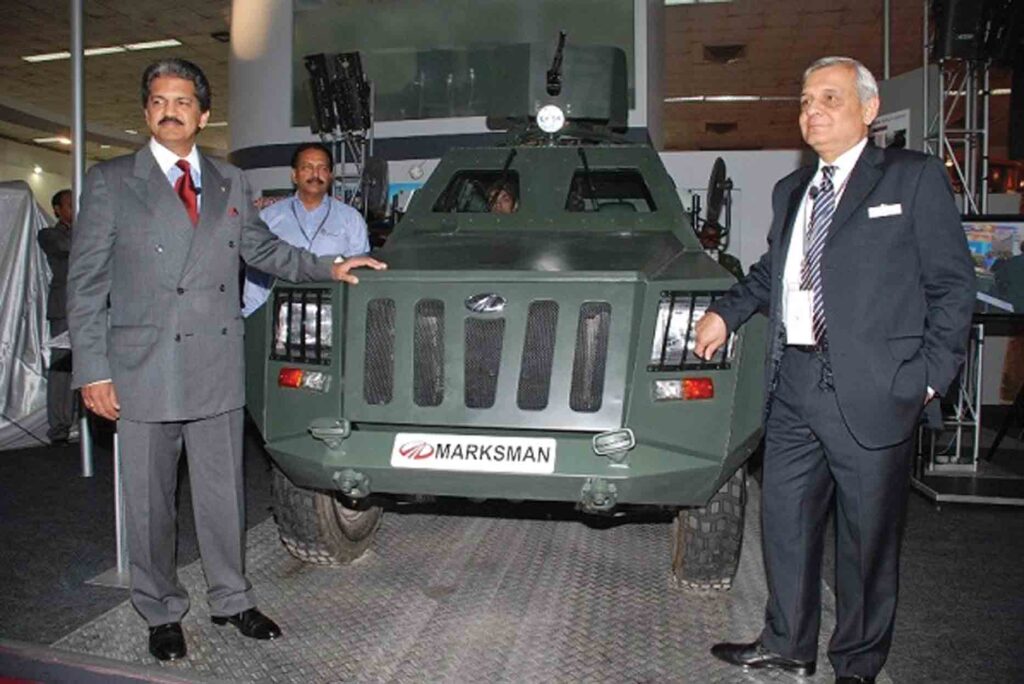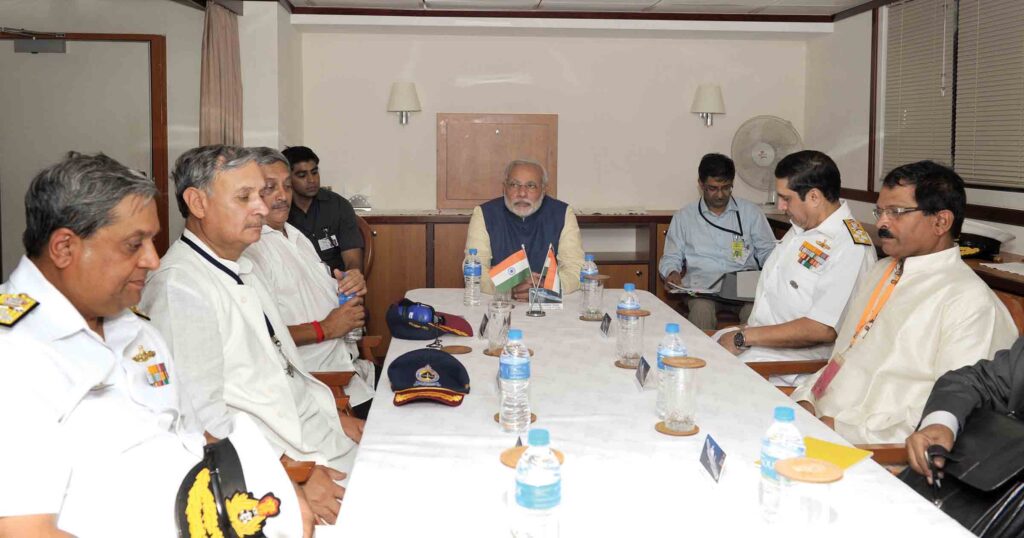- Cover Story
- Governance
- Globe Scan
- Corruption
- State Scan
- Talk Time
- Cover Story
- Governance
- Globe Scan
- Corruption
- State Scan
- Talk Time
Recent Posts
© Copyright 2007 - 2023 Gfiles India. All rights reserved powered by Creative Web INC.GovernancePath to exports
To realise his vision of India being an exporter of defence equipment, the Prime Minister would have to undertake a variety of actions, from policy clean-up to engaging under the Wassenaar Arrangement
NARESH MINOCHAJuly 7, 20146 Mins read503 Views
 Written by NARESH MINOCHA
Written by NARESH MINOCHAPRIME Minister NarendraModi has pitched for export of defence equipment. After dedicating aircraft carrier INS Vikramaditya to the nation on June 14, Modi reportedly stated: “Indian arms and ammunition should be exported across the world and used by smaller nations to protect themselves.”
To realise this wish, he would have to first order a clinical clean-up of the policies and procedures that have choked domestic manufacture and encouraged imports. The Prime Minister would also have to effectively engage with the US and its allies that control defence exports through a 42-nation club named the Wassenaar Arrangement (WA).
India has been a victim of the WA on two counts. First, the WA discourages export of dual-use products and technologies from India to countries that are perceived by the West as a threat to global security. Second, the WA discourages export of the latest defence and related information technologies and products to India.
To begin with, Modi should first know how several private and joint venture projects for manufactureof defence equipment have been delayed due to flawed implementation of policies.
Take the case of the Kanpur-based MKU Pvt Ltd, whose industrial licence application, dated July 15, 2011 for manufacture of opto-electronics equipment such as night vision devices has been blocked by the Government. MKU, which has a controversial past, signed a turnkey project technology agreement with Israel’s Eliel Security Technologies Limited to executethis project.
The Department of Defence Production (DoDP) has recently withheld its recommendation on MKU’s application by citing an ongoing probe by the Central Bureau of Investigation (CBI) against the company for alleged forgery of a no-objection clearance for export of defence items.

Prime Minister Narendra Modi on the deck of INS Vikramaditya in Goa on June 14,
2014, with Chief of Naval Staff Admiral RK DhowanMKU, which describes itself as a leading manufacturer and supplier of protection and surveillance solutions to over 90 countries, has told the government that it has been exporting defence products through its 100 per cent export-oriented unit (EOU). The Commerce Department granted permission for this unit on March 11, 2004.
An official list of EOUs mentions MKU Armors Pvt Ltd as manufacturer and exporter of bullet-proof jackets, compressed armour panels, ballistic kits, ballistic helmets, anti-mine suits, bomb blankets, and the like. Notwithstanding the operation of MKU’s EOU, the Department of Industrial Policy and Promotion (DIPP) recently raked up the issue of the company producing defence gear without an industrial licence.
The Modi Government would have to limit the Defence Ministry’s action against any defaulting industrial group within the security forces domain and not let it become the deciding factor for delaying and denying the group’s projects meant for export and domestic civilian customersUnlike MKU, Mahindra & Mahindra (M&M) subsidiary, Mahindra Defence Naval Systems Pvt Ltd (MDNSPL), has been lucky to escape delay and reprimand for producing sea mines, torpedo launchers, and the like, without an industrial licence.
When MDNSPL’s application for expansion of capacity for these products and for manufacture of two additional items, torpedoes and boats, recently came up for consideration, DIPP noted that the company wasproducing naval gear without a licence. DIPP thus sought comments from the DoDP on this violation of theIndustries (Development & Regulation) Act, 1951 (IDR Act). The latter pointed out that it was only in April 2013 that the list of defence products for industrial licensing was finalised and put in the public domain. The DoDP added that it had no comments to offer on violation of the IDR Act.
The DoDP also reminded DIPP that it was the administrative department for enforcement of the IDR Act and it might thus take an appropriate view in this case. Accepting the DoDP’s reply, the Industrial Licensing Committee (ILC) decided to “close the matter in this regard” in May 2014.
It appears that neither DIPP nor the company placed the facts about the technical violation of the IDR Act. M&M did secure an industrial licence for manufacture of naval gear in December 2004. In 2009, M&M restructured its defence business into two subsidiaries—MDNSPL and Mahindra Defence Land Systems Pvt Ltd, later renamed as Defence Land Systems India Pvt Ltd (DLSIPL).

Unveiling the Mahindra Marksman at the Defence Expo in New Delhi (above); the Mahindra DLSI, designed for counter-insurgency operations (below) 
When M&M applied for transfer of three licences for manufacture of land equipment in the name of DLSIPL, DIPP told the company that the IDR Act did not provide for transfer of licence from the parent company to the subsidiary. Subsequently, DLSIPL applied for and secured the three licences originally issued to M&M. The same procedure was apparently not followed in the case of MDNSPL, resulting in technical violation of the IDR Act.
Another interesting fact is that the DoDP had turned down M&M’s request for inclusion of torpedoes in the licence in January 2009. But it has now approved this addition in the industrial licence held by MDNSPL. What reservations did the DoDPhave about the M&M group’s capability in 2009 and why did it shed them
in 2014?THEDoDP’s propensity to record its reservations is also visible in its belligerent stance to put on hold clearance to the Agusta Westland-Tata joint venture, Indian Rotorcraft Limited’s (IRL’s) plea to shift from defence to domestic civilian and export markets.
IRL applied for this amendment to its foreign investment promotion board (FIPB) approval, dated September 21, 2011, after sensing that its business would suffer once the Defence Ministry blacklists Agusta Westland of Italy’s Finmeccanica group due to its alleged kickbacks in the VVIP chopper deal.
Without DoDP’s clearance for change in the markets, IRL cannot start production and export from its unit in Hyderabad that was slated to go on stream in April 2014. The DoDP wants the FIPB to keep putting on hold the grant of clearances requested by IRL, keeping in view the ongoing CBI probe into thechopper deal.
The DoDP has cited the same concern to convince the FIPB to defer approval to the proposed JV between another Finmeccanicacompany named Selex ES Ltd, and the Chennai-based Indus TeqsitePvt Ltd (ITPL) for production of electronics systems for the defence and aerospace sectors.
Half-a-dozen applications are currently held up for want of policy clarification of the ban on foreign institutional investment in defence units in August 2013. FDI-FII is another area urgently awaiting policy revamp to facilitate setting up of export-focused projectsThe Modi Government would have to limit the Defence Ministry’s action against any defaulting industrial group within the security forces domain and not let it become the deciding factor for delaying and denying the group’s projects meant for exports and domestic civilian customers.

Prime Minister Narendra Modi at a meeting with Navy officers aboard INS Vikramaditya in Goa on June 14, 2014. Goa Chief Minister Manohar Parrikar and Chief of Naval Staff, Admiral RK Dhowan, are also seen. Half-a-dozen applications are currently held up for want of policy clarification of the ban on foreign institutional investment in defence units in August 2013. Prior to this, the government did not distinguish between foreign institutional investment (FII) and foreign direct investment (FDI) in defence equipment manufacture. FDI-FII is another area urgently awaiting policy revamp to facilitate setting up of export-focused projects.
Shifting from company-specific cases to policy or segment-specific logjams, the manufacture of modern small arms has remained a non-starter for over 13 years. In spite of this monumental delay, the Ministry of Home Affairs (MHA) had the audacity to tell DIPP in January 2014 that it had not framed the policy guidelines for manufacture of small arms, ammunition and explosives.
RETURNING the applications of three companies for industrial licences, the, MHA told DIPP to not forward such applications till it frames the policy guidelines.
The MHA had notified the Arms and Ammunitions Manufacturing Policy (AAMP) in April 2010, after a long turf war with the DoDP over licensing of production of small arms and ammunition. In 2004-05, the MHA felt that it was empowered to regulate manufacture of small arms and ammunition by virtue of it being the administrative ministry for the Arms Act, 1959. Subsequently, the ILC stopped considering licence applications for small arms and ammunition.
Another area for exports is that of unmanned aerial vehicles or UAVs. But industrial licensing for UAVs is in a freeze since early 2011 after the Department of Telecommunications (DoT) stopped recommending grant of licences to prospective manufacturers in the wake of the 2G scam. In October 2013, DoT proposed that ILC/DIPP should constitute a panel to frame norms, including ones relating to radio spectrum for grant of licences for UAV manufacture. A committee was thus recently constituted to frame guidelines for manufacture of UAVs, which would sell like hot cakes in both domestic and overseas markets due to their varied applications.
Recent Posts
Related Articles
GovernanceNewsBackdoor entry of Private players in Railway Production Units ?
Written by K. SUBRAMANIAN To Shri G C Murmu C&AG Dear Shri Murmu,...
ByK. SUBRAMANIANFebruary 22, 2024GovernanceNailing Labour to The Cross
Written by Vivek Mukherji THEY grease the wheels of India’s economy with their...
ByVivek MukherjiMay 5, 2020GovernanceBig Metal Momentum
Written by GS Sood PRECIOUS metals especially gold and silver are likely to...
ByGS SoodMay 5, 2020GovernanceStrengthening Social Enterprise Ecosystem: Need for systemic support from the Government
Written by Jyotsna Sitling and Bibhu Mishra THE world faces several challenges today....
ByJyotsna Sitling and Bibhu MishraMay 5, 2020 - Governance
- Governance





























































